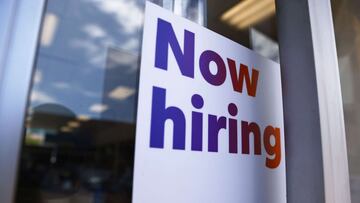Will unemployment benefits be extended after June rates show no change?
June unemployment data shows little movement from May levels, leading some to wonder if federal unemployment benefits will be extended beyond September.

On 2 July, the Bureau of Labor Statistics has released information showing that the June unemployment rate held steady at 5.9%.
The American Rescue Plan included a measure that would allow for the sending of federal pandemic-related unemployment benefits through 6 September 2021. After a lackluster jobs report for April, moderate job growth in May, and a plateau in the unemployment rate in June, some look to the September deadline and wonder if it should be moved back. While the slow job growth could be caused by the economy’s inability to absorb all workers who lost their jobs throughout the pandemic, there are a few other reasons as well.
The first is that the labor market is hot, meaning that if you are looking for a job, the market is working in your favor. Many businesses and organizations impacted by the pandemic opted to let go of their employees to reduce costs and weather the storm. With so many businesses hiring, these individuals are now free agents in the market and can be more selective when picking their next job.
With so many jobs available, some workers who kept their job throughout the pandemic but had their hours cut or have not seen a wage increase are looking at the market and opting to leave voluntarily. This month around 942,000 left their jobs voluntarily, 800,000 more than in May, which also contributed to the stagnation in the unemployment rate.
The argument over labor shortages
Republican leaders are primarily arguing the second reason. Many Republican governors and Members of Congress believe that generous unemployment benefits, sent in addition to payments from the states, are keeping people from going back to work. For that reason, over half of the states, in which Republicans run all but one, have or will end these federal benefits by the end of July. By stripping the federal benefits, including a $300 topper to weekly state benefits, leaders hope that unemployed workers begin searching for their next gig.
However, the White House and many world-renowned economists, including Nobel Prize winner John Stegaliz argue that these benefits are not responsible for a labor shortage or increased prices.
Stegaliz, who published a new article on the subject, explains that “a tight labor market is just what the doctor ordered.” The economist, known for their work examining global inequality, believes that “when the demand for labor is strong, wages at the bottom rise and marginalized groups are brought into the labor market.” Combating the idea from conservative circles that argue the “labor shortage” is caused by excessively generous unemployment insurance benefits, Stegaliz cites various reports that found the opposite to be true.
The White House agrees with these findings and has stated that the temporary nature of the benefits makes it hard for them to impact job-seeking behavior significantly.
Later this month, the state-level unemployment data will become available. This data is critical to understanding if the ending of benefits does, in fact, increase labor participation. Based on the data from May, the answer is no.
In late June, the BLS released data that showed how in states that had moved to end benefits, the percent of civilian labor force participation shrank by .02%, whereas in states that are keeping the benefits, the rate grew by 1.2%.
Additionally, in the state-level unemployment report, they found that of the ten states that experience positive “statistically significant employment changes from April 2021 to May 2021,” only three were states that are ending benefits.
Will benefits be extended?
At this point, there have been no announcements or calls from the White House for benefits to be extended past September. However, as policy and lawmakers collect more data on the economic recovery, a movement of the deadline could arise.
For this to happen, decision-makers may need to see an increase in the number of people claiming benefits. The most recent report from the BLS on unemployment initial claims shows that June numbers fell by over 20,000 claims compared to the end of May.
For the last week of May, 3,771,000 people filed an unemployment claim to receive state benefits. By the end of June, this number fell to 3,469,000, lower than the May figures.
- Crisis económica coronavirus Covid-19
- Subsidio paro
- Tasa paro
- Ciencia
- Coronavirus Covid-19
- Crisis económica
- Desempleo
- Estados Unidos
- Pandemia
- Coronavirus
- Recesión económica
- Coyuntura económica
- Virología
- Epidemia
- Enfermedades infecciosas
- Empleo
- Norteamérica
- Enfermedades
- Microbiología
- Medicina
- América
- Economía
- Trabajo
- Biología
- Salud






